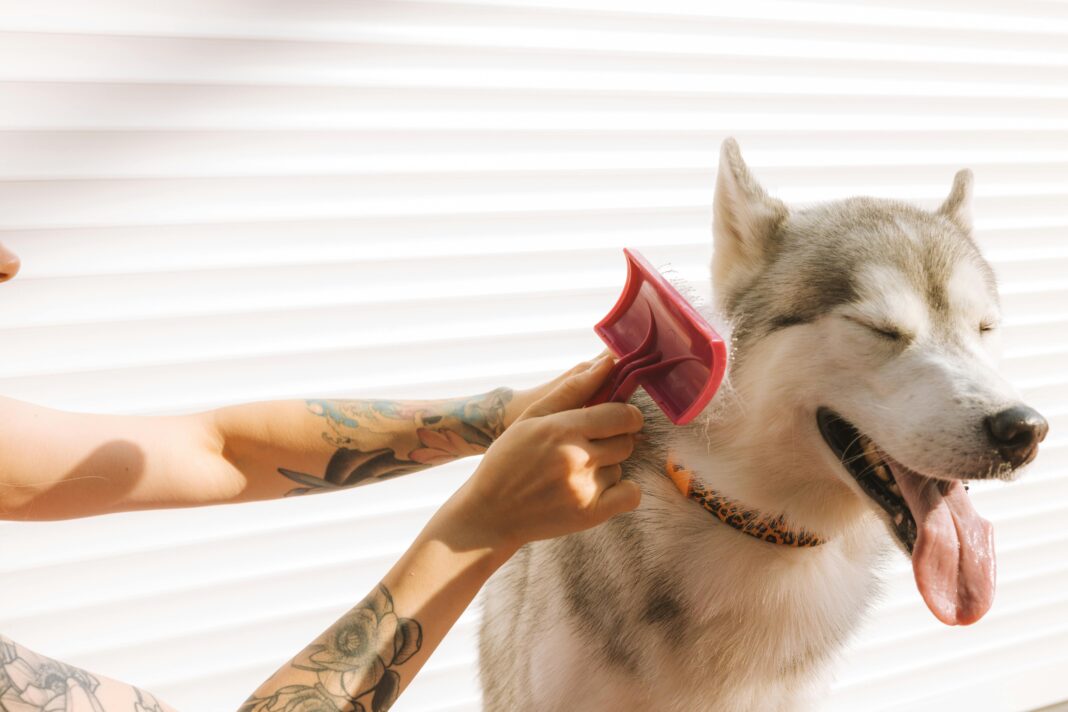Grooming your pet is more than just keeping them looking good; it’s an essential part of pet health care that contributes to their overall well-being. From maintaining a shiny coat to checking for health issues, proper grooming helps ensure a happy and healthy life for your furry companion. Let’s explore essential grooming tips that every pet owner should know.
Why Grooming is Important
Grooming serves multiple purposes:
-
- Health Check: Regular grooming allows you to spot abnormalities such as lumps, skin infections, or parasites early on.
-
- Comfort: Removing tangles and mats can enhance your pet’s comfort, especially for long-haired breeds.
-
- Bonding Time: Grooming is a great opportunity for bonding between you and your pet, improving trust and love.
By prioritizing grooming in your routine, you can contribute significantly to your pet’s health and happiness.
Understanding Different Coat Types
Before diving into grooming techniques, it’s crucial to understand the specific needs of your pet’s coat type. Here’s a brief overview:
-
- Short-Haired Breeds: These pets often require less frequent grooming but shouldn’t be neglected. Regular brushing helps reduce shedding and distribute natural oils.
- Long-Haired Breeds: Long-haired pets need more attention to prevent mats and tangles. A consistent grooming schedule is essential, as mats can lead to skin irritation.
- Curly or Wavy Coats: Breeds like Poodles require special handling to prevent matting. Regular trimming is often necessary.
Tip: Consult Your Vet
Always consult with your veterinarian for specific grooming recommendations based on your pet’s breed and health status.
Essential Grooming Tools
Investing in the right grooming tools can make the process easier and more effective. Here’s what you might need:
-
- Brushes: The type of brush depends on the coat type. Slicker brushes work well for long-haired pets, while bristle brushes are great for short-haired breeds.
-
- Nail Clippers: Regular nail trimming is essential. Invest in a quality pair of clippers that suit your comfort level and your pet’s size.
-
- Ear Cleaning Solutions: Keeping ears clean helps prevent infections. Use vet-recommended solutions and cotton pads.
-
- Shampoo: Choose a gentle, pet-specific shampoo to maintain coat health. Avoid human products, as they can irritate your pet’s skin.
How Often Should You Groom?
The grooming frequency varies based on several factors:
-
- Coat Type: Long-haired breeds may require daily grooming, while short-haired breeds could manage with once a week.
-
- Activity Level: If your pet enjoys outdoor activities, you might need to groom more frequently to remove dirt and debris.
-
- Season: During shedding seasons, pets might need additional grooming to manage the loose fur.
Practical Example
For a Golden Retriever, aim for a thorough brush at least once a week, increasing to two or three times during shedding periods.
Signs Your Pet Needs Grooming
Keep an eye out for these signs that indicate your pet may need a grooming session:
-
- Visible Dirt or Odor: If your pet starts to smell or has visible dirt in their fur, it’s time for a bath and grooming.
-
- Tangles and Mats: If you notice mats forming, especially behind the ears or under the arms, it’s crucial to groom them out promptly.
-
- Overgrown Nails: If you can hear your pet’s nails clicking on the floor, they likely need a trim.
Grooming Techniques for Different Areas
Bathing
-
- Frequency: Most dogs benefit from a bath every 1-3 months, while cats typically require less frequent bathing, depending on their lifestyle.
-
- Technique: Use lukewarm water, and ensure you rinse thoroughly to avoid skin irritation. A non-slip mat can help your pet feel secure in the tub.
Brushing
-
- Technique: Always brush in the direction of hair growth. Start at the head, moving slowly towards the tail, and pay special attention to sensitive areas like belly and paws.
-
- Tip: For pets with thick undercoats, consider using an undercoat rake to remove loose fur effectively.
Nail Trimming
-
- Technique: Only trim the sharp tip of the nail. If you see a pink area (quick), stop cutting to avoid pain and bleeding.
-
- Tip: If your pet is nervous about nail trimming, try to acclimate them with gradual sessions or treats.
Ear Cleaning
-
- Frequency: Check ears weekly for dirt or wax buildup.
-
- Technique: Soak a cotton pad with a vet-approved solution and gently wipe the inner ear, avoiding deep insertion.
Dealing with Matting
For pets with long hair, mats can be a common issue. Here’s how to manage them:
-
- Preventative Care: Regular brushing will help prevent mats from forming.
-
- Effective Removal: If mats occur, use a dematting comb or scissors. Always be cautious and work slowly to avoid hurting your pet.
-
- Seek Professional Help: In severe cases, a professional groomer may be necessary to safely remove mats.
Final Thoughts
Establishing a consistent grooming routine plays a pivotal role in your pet’s health care. By understanding your pet’s unique needs and employing effective grooming techniques, you can enjoy many happy moments together. Regular grooming not only promotes a healthy coat but also strengthens the bond between you and your furry friend.





